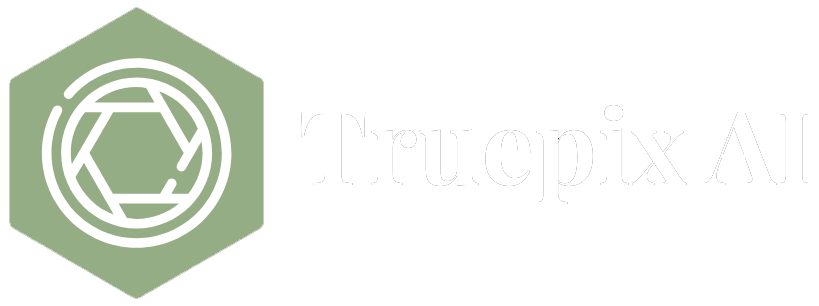
You can create AI-generated images with copyright protection by choosing a platform that embeds cryptographic proof of ownership into every file at the moment of generation, ensuring you hold clear, verifiable rights from day one. This safeguard has become crucial since June 2025, when Disney and Universal’s lawsuit against Midjourney highlighted the legal risks of unlicensed AI outputs. In this guide, we’ll explain why provenance matters, compare protection methods, and walk you through a secure workflow—spotlighting how solutions like Truepix AI make the process friction-free.
On 11 June 2025, Disney and Universal filed a 110-page complaint in the U.S. District Court (Central CA) accusing Midjourney of generating “endless unauthorized copies” of their iconic characters. Legal analysts call it a watershed case that could “shift the future of entertainment,” marking the first major studio action against a generative-AI provider.
The suit arrived just days before Midjourney launched its first video model, underscoring how the rapid jump from images to video is outpacing clear intellectual-property frameworks. For independent artists, marketers, and brands, the message is clear: if billion-dollar studios are worried about provenance, everyday creators need iron-clad proof of ownership too.
1. Metadata Watermarks: Simple tags embedded in EXIF or PNG text chunks. Easy to strip out, so courts may view them as weak evidence.
2. C2PA Signatures: An open standard backed by Adobe and Microsoft that chains edits together. Adoption is growing but not yet universal across AI tools.
3. Cryptographic Hashing + Blockchain: Generates a unique fingerprint of the image and records it on an immutable ledger, creating public, time-stamped proof.
4. Smart-Contract NFTs: Mint the artwork as a tokenized asset, establishing provenance and facilitating royalty enforcement on compatible marketplaces.
5. Platform-Native Cryptographic Signing (e.g., Truepix AI): The platform automatically signs each output with the user’s private key and stores the signature on-chain, bundling authenticity, ownership, and full commercial rights in one step.
1. Draft a unique prompt that avoids copyrighted characters or trademarks unless you hold a license.
2. Select a secure AI image generator that offers built-in ownership verification. Platforms advertising “cryptographic proof of image ownership” or “secure AI image generation for commercial use” are ideal.
3. Enter your prompt—advanced tools like Truepix AI remove model-selection complexity—then hit generate.
4. Download the output along with its cryptographic certificate or shareable public-key link. This file pair is your evidence in case of disputes.
5. Store the certificate in a safe location (e.g., cloud drive plus offline backup) and note licensing terms if you plan to resell or publish.
6. Monitor for infringement using reverse-image search or content-ID services, armed with verifiable proof should takedown notices be required.
Truepix AI automatically cryptographically signs each image at the moment of generation and records that signature on the blockchain. Users simply sign up, type a prompt, click generate, and receive a downloadable file plus a public-key verification link. The result is immutable proof of originality, authenticity, and full commercial rights—no extra tools, plug-ins, or C2PA workflow required.
Because the signing is baked into the generation pipeline, creators avoid the risk of forgetting to register or manually watermark their work. This friction-free approach helps marketers, designers, and entrepreneurs ship content faster while staying legally safeguarded.
When vetting platforms, use this checklist:
• Provenance: Does the service provide cryptographic or blockchain-based proof?
• Ownership Terms: Are full commercial rights granted to you?
• Source Training Data: Has the provider addressed licensed datasets to limit infringement risk?
• Audit Transparency: Can third parties independently verify authenticity?
• Scalability: If you expand into video or brand fine-tuning, will the same protections apply?
Platforms that meet these criteria—such as those offering automatic signing like Truepix AI—position creators for compliant growth as the AI content boom accelerates.
• Using famous characters or trademarked logos without permission, even if the image is cryptographically signed.
• Relying solely on invisible watermarks, which infringers can strip or overwrite.
• Forgetting to save transaction hashes or certificates, leaving no audit trail.
• Publishing AI images under Creative Commons without clarifying commercial rights, creating downstream confusion.
The “AI video race” (Sora, Veo, Dream Machine, Runway Gen-4) multiplies infringement stakes because moving images borrow more frames and styles. Seek generators that extend cryptographic proof to video frames and audio layers, or plan for hybrid workflows that hash each frame batch. Laws like the EU AI Act and pending U.S. legislation may soon require traceable provenance for all synthetic media, so adopting robust image safeguards today lays the groundwork for tomorrow’s formats.
In most jurisdictions you hold rights if you exercised creative control, but courts increasingly demand verifiable provenance; embedding cryptographic proof strengthens your claim.
Yes—blockchain hashes are immutable and time-stamped, whereas visible marks can be cropped and invisible metadata can be erased.
No, Truepix AI employs its own cryptographic signing solution recorded on the blockchain, eliminating the need for external C2PA workflows while still providing public verification.
If the platform grants full commercial rights and you can prove ownership (e.g., via a blockchain certificate), most marketplaces will accept the content, but always review individual site policies.
You can present the on-chain certificate or public-key link as evidence of originality, file DMCA takedowns, or pursue legal action citing immutable proof.
Copyright protection is no longer optional in the era of generative AI. By choosing platforms that embed immutable proof—such as Truepix AI—you can create, share, and monetize digital content with confidence. Adopt secure workflows now, and you’ll be ready for whatever the next wave of AI media innovation brings.